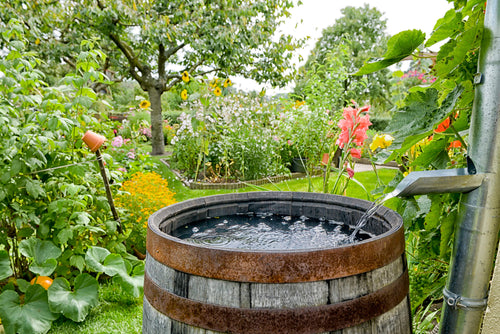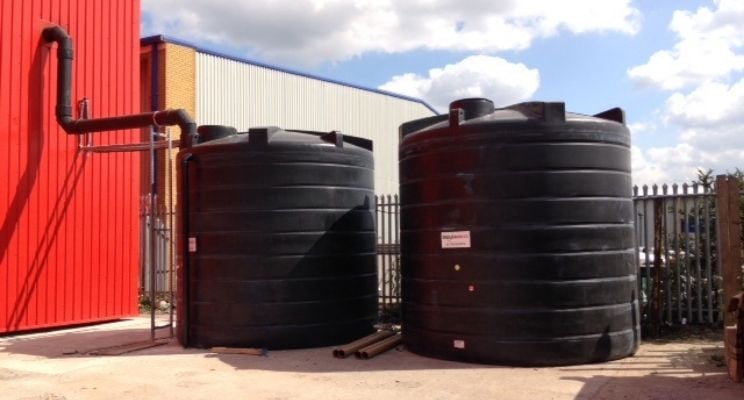The Comprehensive Guide to Rainwater Harvesting: From Home to Industry
Overview
Rainwater harvesting is an age-old practice with renewed relevance in today’s sustainable landscape. It involves collecting and storing rainwater to be reused rather than allowing it to run off into the ground. This simple yet powerful technique can be adapted for a wide range of applications, from irrigating gardens and flushing toilets to even, with proper filtration, providing safe drinking water. Whether implemented at the household level or in large industrial settings, rainwater harvesting offers a wealth of benefits for water conservation, environmental protection, and cost savings.

Benefits of Rainwater Harvesting
-
Water Conservation
One of the primary benefits of rainwater harvesting is its significant contribution to water conservation. By capturing rainwater, we reduce our dependence on public water systems, which is especially important in drought-prone areas. Harvested rainwater can be used for many non-potable applications, such as irrigation, cleaning, and toilet flushing, freeing up potable water for essential uses. -
Environmental Protection
Rainwater harvesting helps reduce the volume of stormwater runoff, which is water that flows over the ground after a rainfall. This runoff often picks up pollutants, erodes soil, and contributes to flooding, especially in urban areas where natural infiltration is limited. By capturing rainwater, we mitigate these environmental impacts, prevent soil erosion, and reduce the strain on stormwater systems. -
Cost Savings
Rainwater is a free resource, and harvesting it can lead to substantial savings on water bills. While the initial setup cost for a rainwater harvesting system may vary depending on its complexity, the long-term savings are significant, particularly for households or businesses that use a lot of water for non-drinking purposes. -
Resilience During Droughts
In regions prone to dry spells, rainwater harvesting provides a valuable backup source of water. By storing water during rainy periods, individuals and businesses can rely on their own supply during times of scarcity, ensuring greater resilience against droughts and water restrictions. -
Groundwater Recharge
Collecting and storing rainwater can also benefit local aquifers. Systems designed for groundwater recharge allow excess water to seep back into the ground, replenishing the water table. This practice helps maintain natural water cycles and supports long-term water availability.
Getting Started with Rainwater Harvesting
Starting a rainwater harvesting system doesn’t need to be complicated or costly. Here are some basic steps to implement a system effectively:
-
Assess Your Water Needs
Identify how much water you’ll need and what you’ll be using it for. This helps in determining the size of the collection and storage system. -
Choose Your Collection Area
Rooftops are the most common collection area as they provide a large, relatively clean surface for rainwater collection. Gutters and downspouts can direct the water into a storage system. -
Install a Storage Tank
Once collected, rainwater needs a place to be stored. For residential systems, tanks can range from small, simple barrels to larger cisterns. Filtration systems should be included to remove debris and contaminants. -
Consider Filtration and Purification
If the water is intended for non-potable uses like irrigation or washing, minimal filtration is often sufficient. However, if you plan to use the water for drinking or cooking, a more advanced filtration and purification system will be needed to ensure its safety.
Industrial-Grade Rainwater Storage Tanks
For businesses and facilities with high water demands, industrial-grade rainwater storage tanks offer a robust solution. These tanks are specifically designed to hold large volumes of water and can connect directly to the facility’s roof and drainage systems. Industrial-grade tanks are built to withstand the elements and are often equipped with additional filtration and treatment systems for maximum water quality.

Benefits of Industrial-Grade Rainwater Tanks
-
High Storage Capacity
Large-capacity storage tanks allow facilities to collect and store significant volumes of rainwater, ensuring that there’s always a steady supply for non-potable applications. -
Reduced Reliance on Municipal Water Supplies
By tapping into rainwater for processes like irrigation, cooling systems, and equipment washing, facilities can substantially reduce their dependence on public water sources. This not only cuts costs but also contributes to the community’s overall water sustainability. -
Versatility in Water Use
With the right treatment systems, rainwater collected in industrial tanks can be used for a wide range of applications. This flexibility is valuable for industries with variable water needs, allowing them to adapt their usage based on supply and demand.
Conclusion
Rainwater harvesting is a valuable practice that supports environmental sustainability, economic savings, and water security. From simple residential systems to large-scale industrial setups, capturing rainwater offers an effective way to reduce dependency on public water sources, support local ecosystems, and build resilience against water scarcity. For anyone looking to contribute to a sustainable future, rainwater harvesting is a step worth taking.

